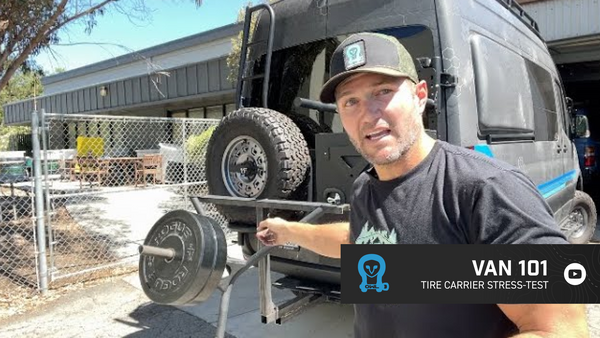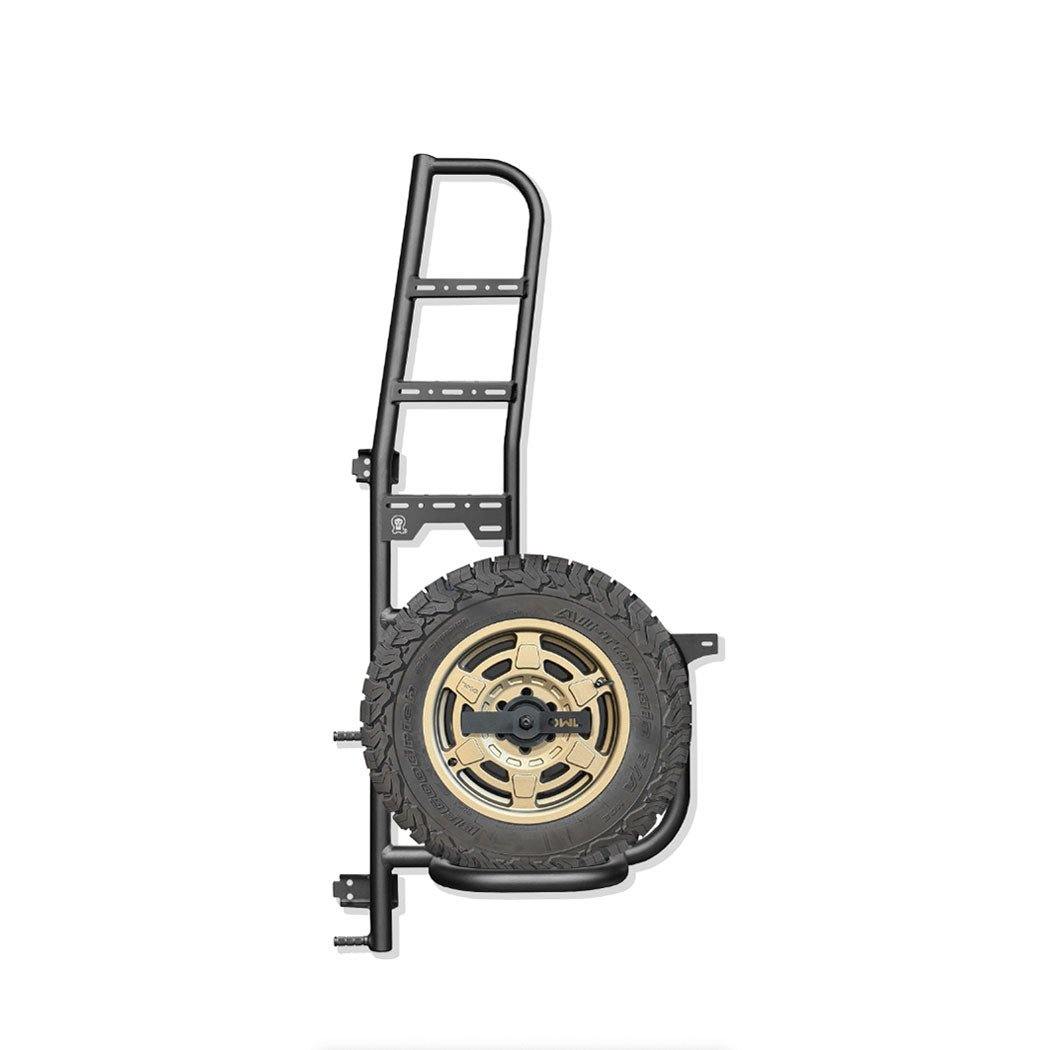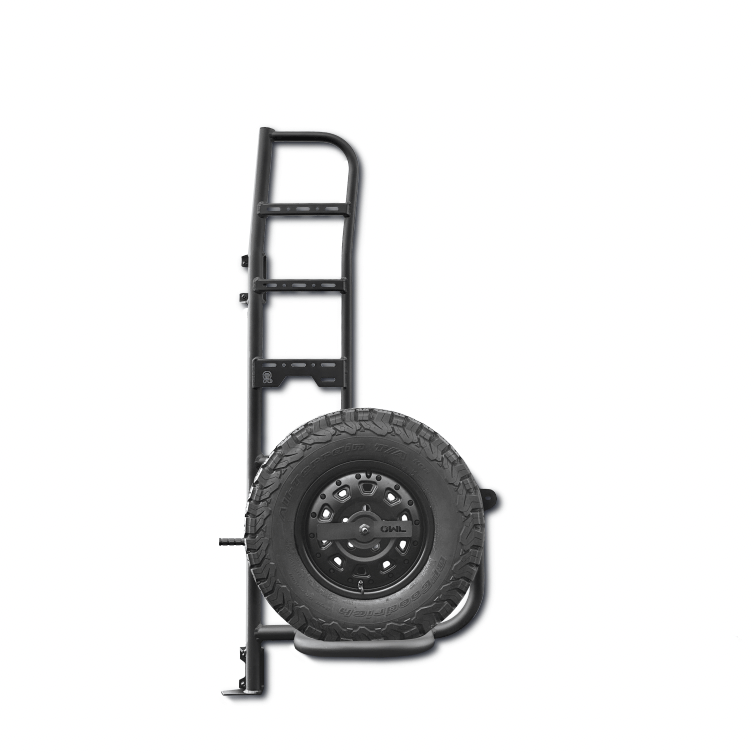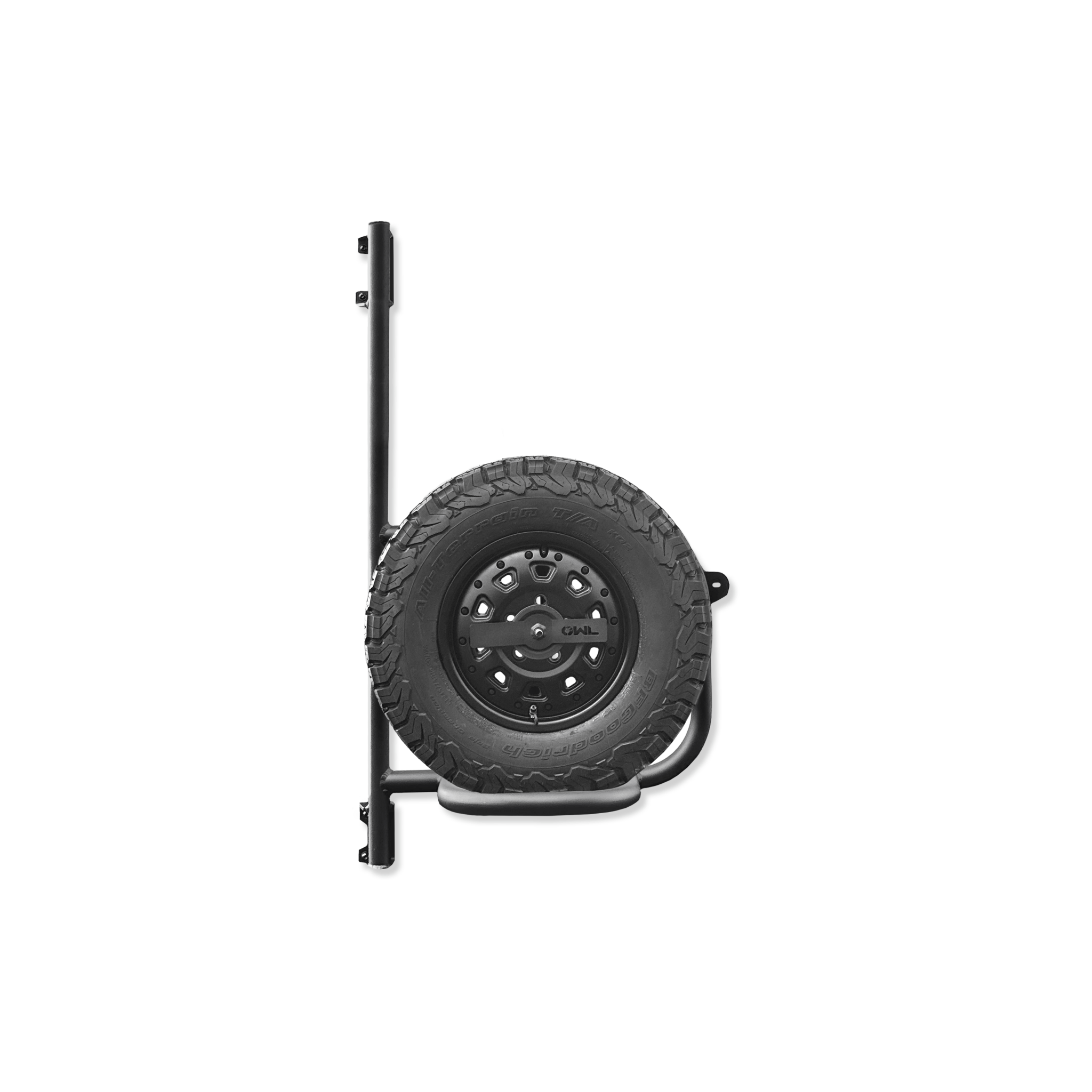Van 101
How Strong Are Van Tire Carriers? Let's Destroy Them for Science
One of the most essential upgrades for overlanders and off-road explorers is a robust rear tire carrier. There are plenty of options out there, but not all are built to tackle the rough, unpredictable conditions true adventure demands. We're not just talk about durability; let's put our carriers and competitors’ through real-world, destructive testing that separates the contenders from the pretenders.
Material Selection: Aluminum vs. Steel vs. Stainless
Materials are more than just marketing buzzwords. The metal used in your tire carrier is directly responsible for its longevity, performance, and weight—factors that matter whether you’re crawling rocks or hauling down graded backcountry roads.
Aluminum:
-
Lightweight, minimizing added strain on van doors and hinges
-
Resists rust—ideal for all-weather and coastal travel
-
Requires advanced machining expertise for structural strength
-
Soft and challenging to weld, but, when correctly engineered, offers unbeatable strength-to-weight ratios
Steel:
-
Inexpensive, straightforward to fabricate and weld
-
Offers good strength but adds significant weight
-
Susceptible to rust, which can lead to long-term durability issues
Stainless Steel:
-
Resists corrosion, but not as strong as carbon steel or high-grade aluminum
-
Marketing claims of "stainless steel" are often misleading—true stainless construction is rare due to cost and inadequate strength for critical applications
In the destructive test—our aluminum-built carriers outperformed heavier steel alternatives, supporting over 230 pounds before any deflection—while comparable steel designs exhibited significant bending and eventual failure well below that threshold.
Structural Engineering: It’s All About the Boxed Hinge
Forget flat metal straps and flimsy attachment points. The single most critical differentiator in pro-grade tire carrier performance is how the load is supported and transferred into the van door assembly.
Why Does This Matter?
-
Sprinter doors are thin sheet metal, never intended to absorb dynamic loads from a 100-pound mounted tire.
-
Poor design = flex, metal fatigue, and failing doors.
-
Secure, robust carriers minimize movement and distribute forces safely.
The Owl Boxed-In Hinge:
We pride ourselves on our unique boxed-in hinge system—a concept borrowed straight from engineering’s favorite shape, the I-beam. Here’s why it performs:
-
Rigid Geometry: By boxing the hinge, we create a structure that resists flex, so every slam or bump isn’t transmitted as twisting force onto your van’s door.
-
Preloading Design: Our carriers are engineered with a slight offset so when you install them, tightening the fasteners preloads the structure. This preload reduces impact shock, drastically extending door lifespan.
-
Minimal Third-Point Load: Many competitor carriers rely on a “no-drill” system that attaches directly to the door panel, trading fast installation for compromised weatherproofing and added stress. Our system leverages high-strength factory hinge points and eliminates unnecessary drilling, reducing long-term maintenance.
Real-World Testing: Lab Numbers Don’t Lie
Marketing claims come cheap. At Owl, we put prototypes and competitors through actual destructive testing—buying OEM doors from Mercedes-Benz, mounting carriers, and slamming weights until something fails. Here are the highlights from our recent experiment:
-
Owl Aluminum Carrier: Supported 230 pounds with no bending or damage. That’s well beyond what even the largest off-road tire/wheel combo requires.
-
Leading Competitor’s Carrier (untested steel design): Failed at only 130 pounds, flexing like a spring and transmitting damaging force directly to the door’s weakest attachment point.
-
No Inner Door Plate Required: Owl’s boxed hinge absorbs load and impact so well that we don’t require internal steel plates—a must-have on less thoughtful designs.
What That Means for You:
You get a product that holds up over years and hundreds of thousands of miles of harsh use. The real-world experience confirms: Proper engineering > cheap materials and shortcuts.
Installation Myths: “No-Drill” Doesn’t Mean No Hassle
Many “no-drill” tire carriers seem simpler, but here’s what the testing tells us:
-
Often requires cutting or grinding into weatherproofed door panels, trading one problem for another.
-
Adds unnecessary flex and risk of water ingress.
-
Owl’s mounting system is designed to preserve structural integrity and weatherproofing—making for both an easier install and a longer-lasting upgrade.
Weight Matters—And So Does Strength
A lighter carrier means less wear and tear every time you open the door, less sagging over time, and better performance on rough roads. By using high-grade aluminum and clever design, our carriers deliver strength at half the weight of many competitors—directly reducing stress and preserving your van’s systems for the long haul.
What to Look for in a Tire Carrier: Quick Checklist
If you’re vetting gear for your next adventure build, make sure your carrier ticks these boxes:
-
Material: High-grade aluminum or proven steel, not just “stainless steel” marketing hype
-
Boxed hinge or I-beam engineering: To ensure rigidity and load distribution
-
Proven, tested design: Not just CAD drawings or pretty photographs
-
Minimal door modification: To protect weatherproofing and OEM structure
-
Preload at mounting: For impact resistance and long-term reliability
-
No reliance on flimsy third mounting points or “springy” metal bars
If you don’t see verified strength testing—or if the brand can’t show you actual results—keep looking.
Final Thoughts: Demand the Best, Then Get Out and Explore
At Owl, our products are build for real performance—proven in the shop, on the trail, and after hundreds of thousands of hard-fought miles. When we say our tire carriers are among the strongest, lightest, and most reliable in the industry, it’s not just a claim—it’s backed by rigorous, transparent, and sometimes destructive testing designed to keep you rolling to the remotest corners.









